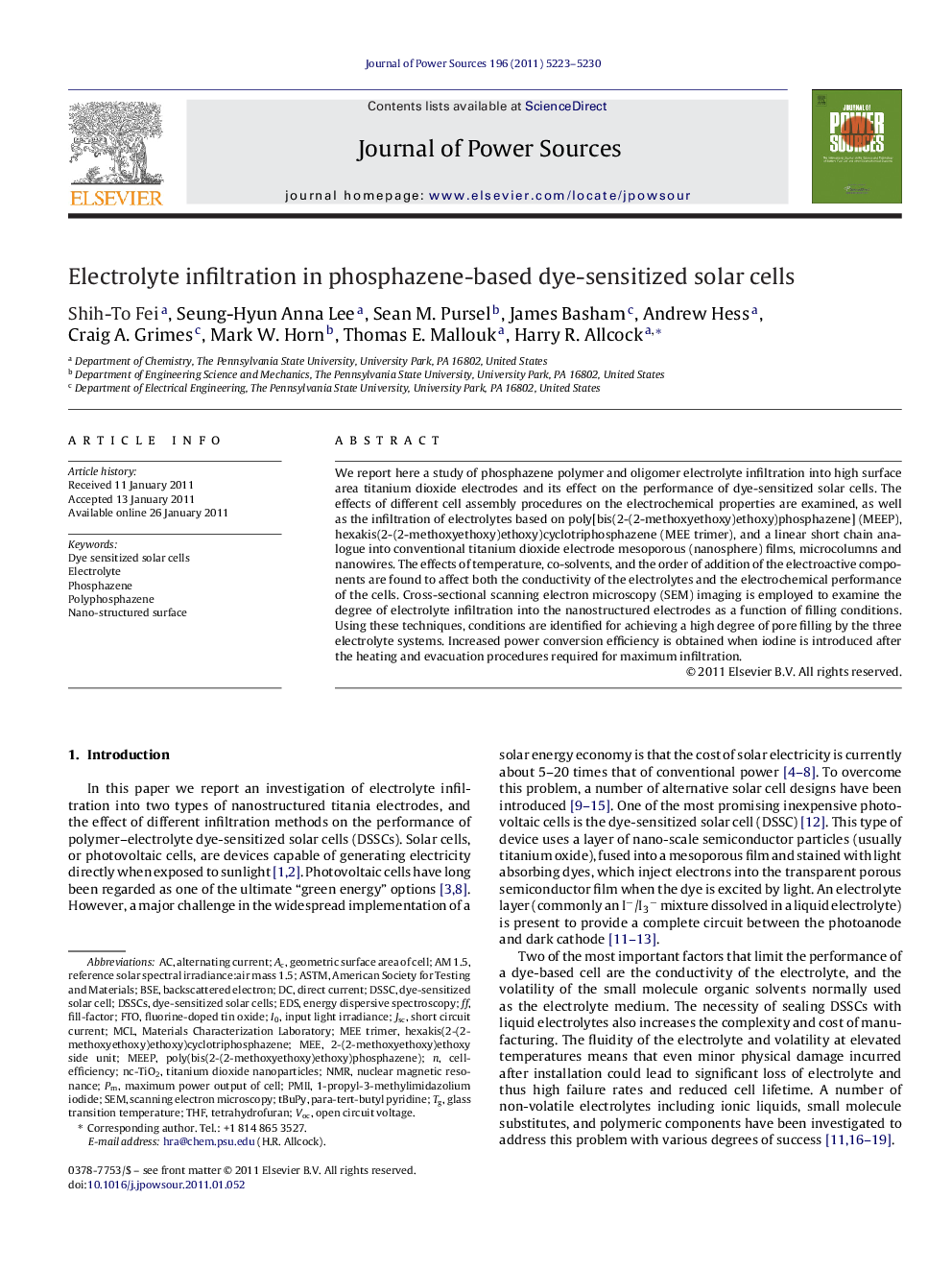| کد مقاله | کد نشریه | سال انتشار | مقاله انگلیسی | نسخه تمام متن |
|---|---|---|---|---|
| 1284800 | 973089 | 2011 | 8 صفحه PDF | دانلود رایگان |

We report here a study of phosphazene polymer and oligomer electrolyte infiltration into high surface area titanium dioxide electrodes and its effect on the performance of dye-sensitized solar cells. The effects of different cell assembly procedures on the electrochemical properties are examined, as well as the infiltration of electrolytes based on poly[bis(2-(2-methoxyethoxy)ethoxy)phosphazene] (MEEP), hexakis(2-(2-methoxyethoxy)ethoxy)cyclotriphosphazene (MEE trimer), and a linear short chain analogue into conventional titanium dioxide electrode mesoporous (nanosphere) films, microcolumns and nanowires. The effects of temperature, co-solvents, and the order of addition of the electroactive components are found to affect both the conductivity of the electrolytes and the electrochemical performance of the cells. Cross-sectional scanning electron microscopy (SEM) imaging is employed to examine the degree of electrolyte infiltration into the nanostructured electrodes as a function of filling conditions. Using these techniques, conditions are identified for achieving a high degree of pore filling by the three electrolyte systems. Increased power conversion efficiency is obtained when iodine is introduced after the heating and evacuation procedures required for maximum infiltration.
The results of a study of phosphazene polymer and oligomer electrolyte infiltration into high surface area titanium dioxide electrodes are described together with its effect on the performance of dye-sensitized solar cells. The influence of different cell assembly procedures on the electrochemical properties was studied as well as the infiltration of the electrolytes into various electrode designs such as conventional mesoporous films, microcolumns, and nanowires. The conditions required for increased power conversion efficiency were examined.Figure optionsDownload as PowerPoint slideResearch highlights
► Heating under vacuum is required for full infiltration of MEEP type electrolytes.
► Some iodine is volatilized during heat treatment of unsealed cells.
► Column type electrodes are infiltrated more readily than conventional electrodes.
Journal: Journal of Power Sources - Volume 196, Issue 11, 1 June 2011, Pages 5223–5230